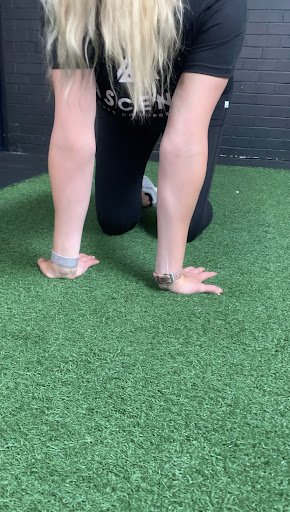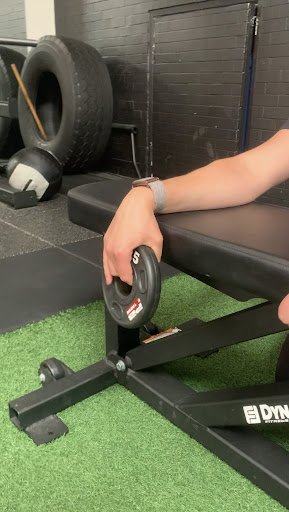Relieve Golf Wrist Pain with These Tips!
What is Golf Wrist Pain?
Golf wrist pain can be a frustrating experience for anyone who enjoys the sport. The pain may be in the form of throbbing, burning, or aching sensations. Some golfers find that they cannot play at their best due to the pain and may even have to stop playing altogether.
There is no single answer as to what causes golf wrist pain, but there are some things that can help reduce or eliminate the discomfort.
Causes: What are the causes of Golf Wrist Pain?
Golf wrist pain can be caused by several things, from poor swing mechanics to overuse.
In some cases, the pain may be due to an underlying condition such as carpal tunnel syndrome.
Improper swing mechanics can cause the wrists to twist and torque, leading to pain and inflammation.
Overuse can also lead to pain and inflammation, as well as tendonitis. Acute trauma can result in sprains and tears of the ligament and bone fractures. At the same time, overuse over a long period can cause Ulnar-sided wrist pain.
Carpal tunnel syndrome is a condition that affects the nerves in the wrist, causing pain, tingling, and numbness in hand. It can be caused by repetitive activities such as golfing, typing, or using a handheld device.
If you are experiencing golf wrist pain, it is essential to rule out any underlying conditions and correct improper swing mechanics. See your doctor or physical therapist for help diagnosing and treating the problem.
Symptoms: What are the symptoms of Golf Wrist Pain?
Golfers often experience pain in their wrists, hands, and arms. It is usually the result of repetitive motions used when playing golf. The most common symptom of golf wrist pain is aching or soreness in the wrist. You may also experience tingling or numbness in your hand, weak grip strength, difficulty gripping the club, or pain when moving your wrist.
The symptoms of golf wrist pain include swelling, tenderness, and stiffness in the wrist area. There may be bruising and a limited range of motion in the wrist in severe cases.
If you are experiencing any of these symptoms, it is important to seek medical attention to prevent further damage to the wrist. Treatment for golf wrist pain may include rest, ice therapy, and physical therapy.
Diagnosis.
It can be hard to diagnose wrist pain for radiologists and surgeons because the hand's anatomy is so small. However, a new imaging technique is used to locate abnormal bone metabolism and helps with the CT scan.
To diagnose with the best result, it is important to understand the history of the person with the injury, their patterns, and form while playing golf, and their activities outside of golf.
By looking at the injury and the history of the golf swing biomechanics, the injury can be traced back, and the minor problems that cause pain can be fixed in terms of technique and practice. Thus, time away from the sport is most likely needed as the tendons need time to heal.
Treatment: How is Golf Wrist Pain Treated?
At Home:
Golf wrist pain can be treated through various methods.
The most common treatment is rest. It means the person stops playing golf for a specific time to allow the injured area to heal.
Another common treatment is ice. It involves putting an ice pack on the injured area for about 20 minutes every few hours.
At The Doctor:
A doctor may prescribe medication or physical therapy if the injury is not going away.
More Severe Injuries.
The most common treatment for Golf Wrist Pain is surgery to release the pressure on the nerve. However, young athletes may need surgery, but treatments are often more focused on alleviating the pain and how to help them back to the sport.
Prevention: How Can Golf Wrist Pain Be Prevented?
Prevention is key when it comes to golf wrist pain. There are a few things that you can do to help prevent the onset of carpal tunnel syndrome, which is the most common type of golf wrist pain.
First, make sure that you are taking regular breaks from playing. Get up and move around every 20 minutes to stretch your muscles and get your blood flowing.
You should also be sure to use good posture when playing. Slouching can put unnecessary strain on your wrists and lead to pain.
Finally, warm-up before playing by doing some light stretching exercises. It will help loosen up your muscles and prepare them for the demands of golf.
Exercises:
The best way to prevent golf wrist pain is to perform a few simple exercises regularly.
One easy exercise is holding your arm straight and making a fist. Bend your wrist back and forth ten times. You can also do this exercise using a resistance band.
Another great exercise is to stretch your wrists by placing one hand in the other hand's palm and gently pressing down. Hold for 30 seconds, then switch hands. You can also do this stretch with your arms out to the sides.
Is Golf Wrist Pain Serious?
Yes, golf wrist pain can be severe. If left untreated, it can develop into carpal tunnel syndrome, a condition that affects the use of the hand and arm. Symptoms of carpal tunnel syndrome include pain, tingling, numbness, and weakness in the hand. The condition can make it difficult to grip objects or perform other manual dexterity tasks.
If you're serious about golf, you need to train with the best. At our San Francisco golf training gym, we offer a comprehensive approach to improving your game. Our experienced coaches will help you build strength, improve flexibility and stability, and hone your skills.
And don't forget to check out our article How To Get Better at Golf - The Ultimate Guide To The Perfect Golf Swing.
Plus, our comfortable and supportive environment will help you stay motivated and focused on your goals. Click here to book an assessment today and start playing better golf tomorrow!
By Michelle Vik Myrvold




